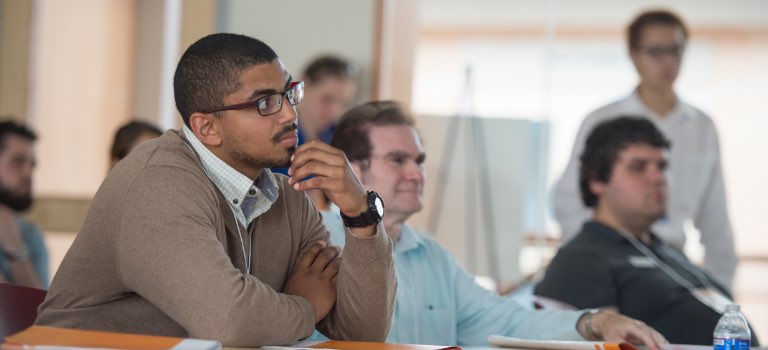Initiatives
RIT is a student-centered research university with signature strengths in technology, the arts, and design. Below are some of the initiatives that members of the Office of the Provost and Division of Academic Affairs are working on to propel the academic vision of the university forward. Each is part of President Munson’s strategic plan for the university.

Academic Facilities and Capital Planning
Under the direction of RIT’s President David C. Munson Jr., the university is pursuing the construction and renovation of facilities that support the core activities of creativity, design, research, and innovation.
The following projects are part of the master plan:

Artificial Intelligence
As a University recognized for signature research and educational programs in the technologies, RIT strives to be a leader in the research and development of AI applications. These applications extend into curriculum, pedagogy, campus life, business processes and policy---creating a living/learning environment characterized by innovation, yet guided by responsible and ethical decision making.

Diversity and Inclusion
RIT is a kaleidoscope of engaged, socially conscious, and intellectually curious minds — each embraced for our uniqueness. Diversity and inclusion are essential to RIT’s organizational growth and synergy. As a result, the goal for 2025 is to continue to diversify the staff, faculty, and administration by gender, race, and nationality with an emphasis on increasing the number and percent of female faculty in STEM fields and African American, Latin American, and Native American faculty in all fields.

Expanding Doctoral Education
Increasing RIT’s footprint in doctoral education is another important goal in the strategic plan. During the 2018-19 academic year, four programs were approved to begin developing formal Ph.D. proposals: business administration, chemical and biomedical engineering, electrical and computer engineering, and mechanical and industrial engineering. From 2020-2025, additional programs will begin proposal development. New ideas are encouraged. You can submit one through the New Degree Program Intent Document and Process.

Faculty Hiring Initiative
RIT is a vibrant community of world-class scholars and creative artists dedicated to changing the world through teaching, research, and scholarship. In an effort to achieve RIT’s ambitious strategic vision, we must intensify our call for imaginative, innovative, and collaborative people who are eager to learn, practice, and teach transformative innovation. As a result, the university’s president has committed to hiring 50 faculty over the next five years.

Performing Arts
RIT seeks to enhance the student experience on its main campus by creating more experiential learning opportunities for students, including building innovative maker and learning facilities and greatly strengthening our performing arts programs.
For the first time, RIT introduced performing arts scholarships where the university received 279 digital submissions that included auditions in vocal and instrumental music, musical theater, dance, acting, and technical production. Out of 279 submissions for the 2019-2020 academic year, about 150 students accepted this scholarship.
RIT also added more faculty and staff with expertise in the performing arts and plans on creating a performing arts theater. More information about that the facility is below in the Academic Facilities and Capital Planning section.

Student Success
RIT is a student-centered research university. Ensuring our current and prospective students receive an exceptional educational experience is paramount. In the Greatness through Difference 2018-2025 Strategic Plan, one of the most important objectives is to increase graduation rates across all demographics.
The 2025 goal is that 78% of our first-year students receive an RIT degree within six years and that at least 60% graduate “on time” within their degree programs (four years in four-year programs, five years in five-year programs).
To support this measure, one of the university’s initiatives is piloting a student success predictive analytics model to see how students are progressing each semester. If one needs help, highly trained faculty and staff at RIT can pinpoint where the area of difficulty lies and step in to help the student. The pilot program began in the 2019-2020 academic year.

Technology, the Arts, and Design
The Greatness through Difference 2018-2025 Strategic Plan calls for RIT to more purposefully focus on the intersection of technology, the arts, and design. The mixture of STEM (science, technology, engineering, and math) disciplines along with art and design is a centerpiece of RIT’s innovative curricula. The combination is lived out in inventive degree programs and cutting-edge facilities and, most importantly, in the students who choose RIT.
Learn more about technology, the arts, and design initiative



